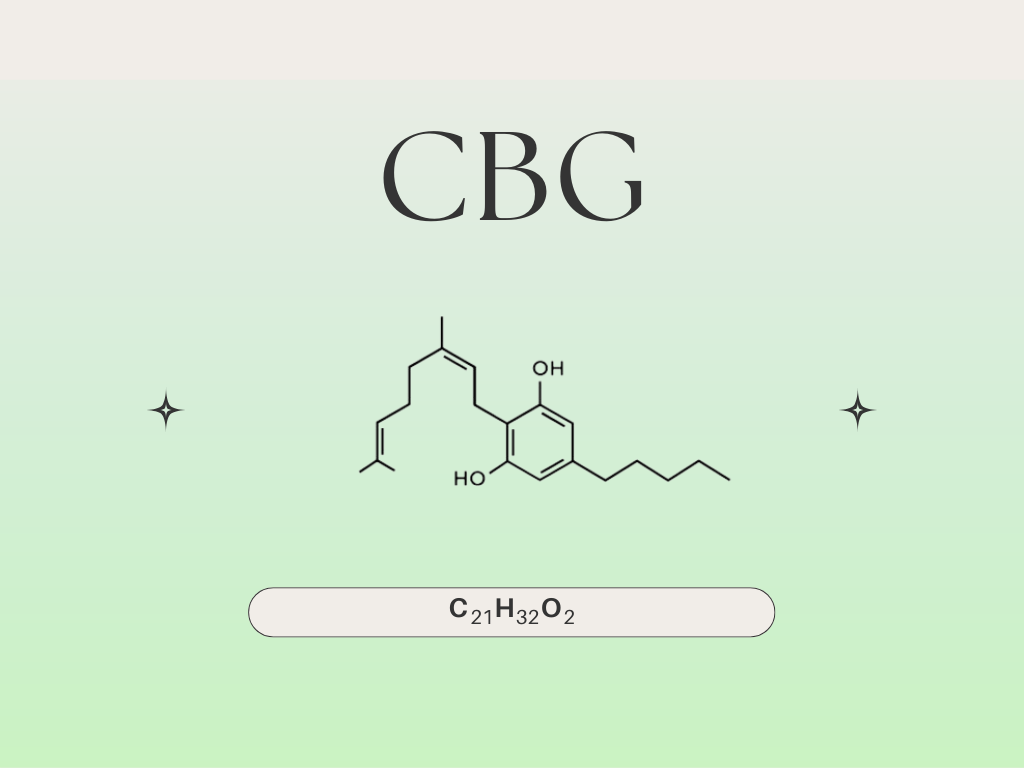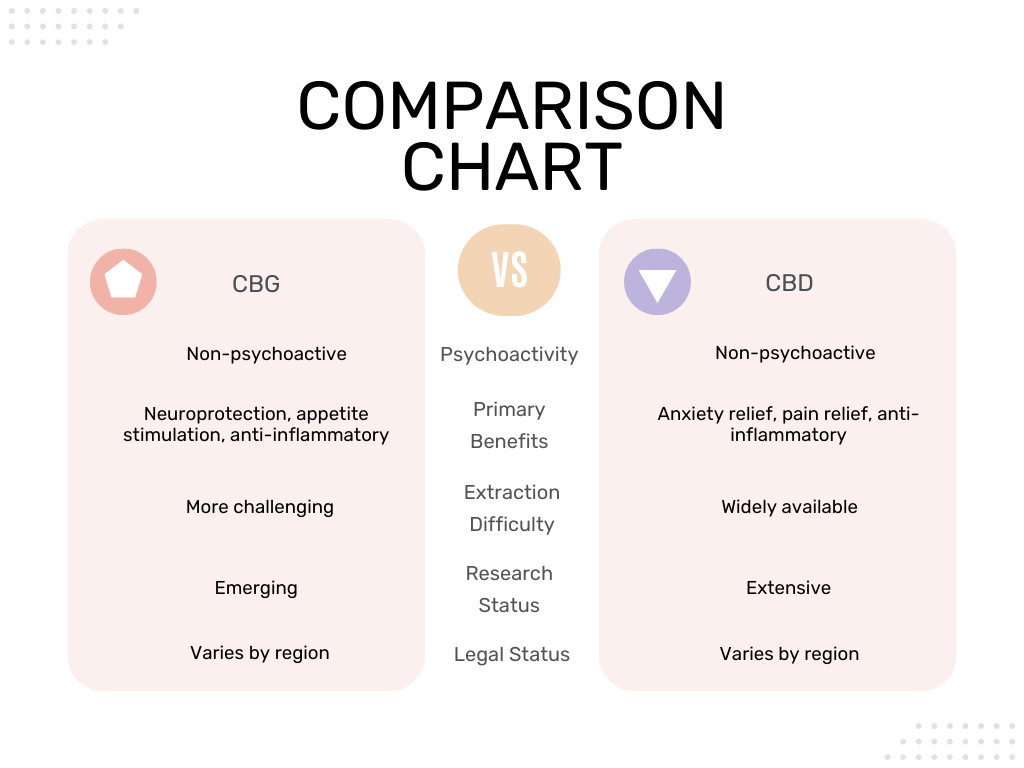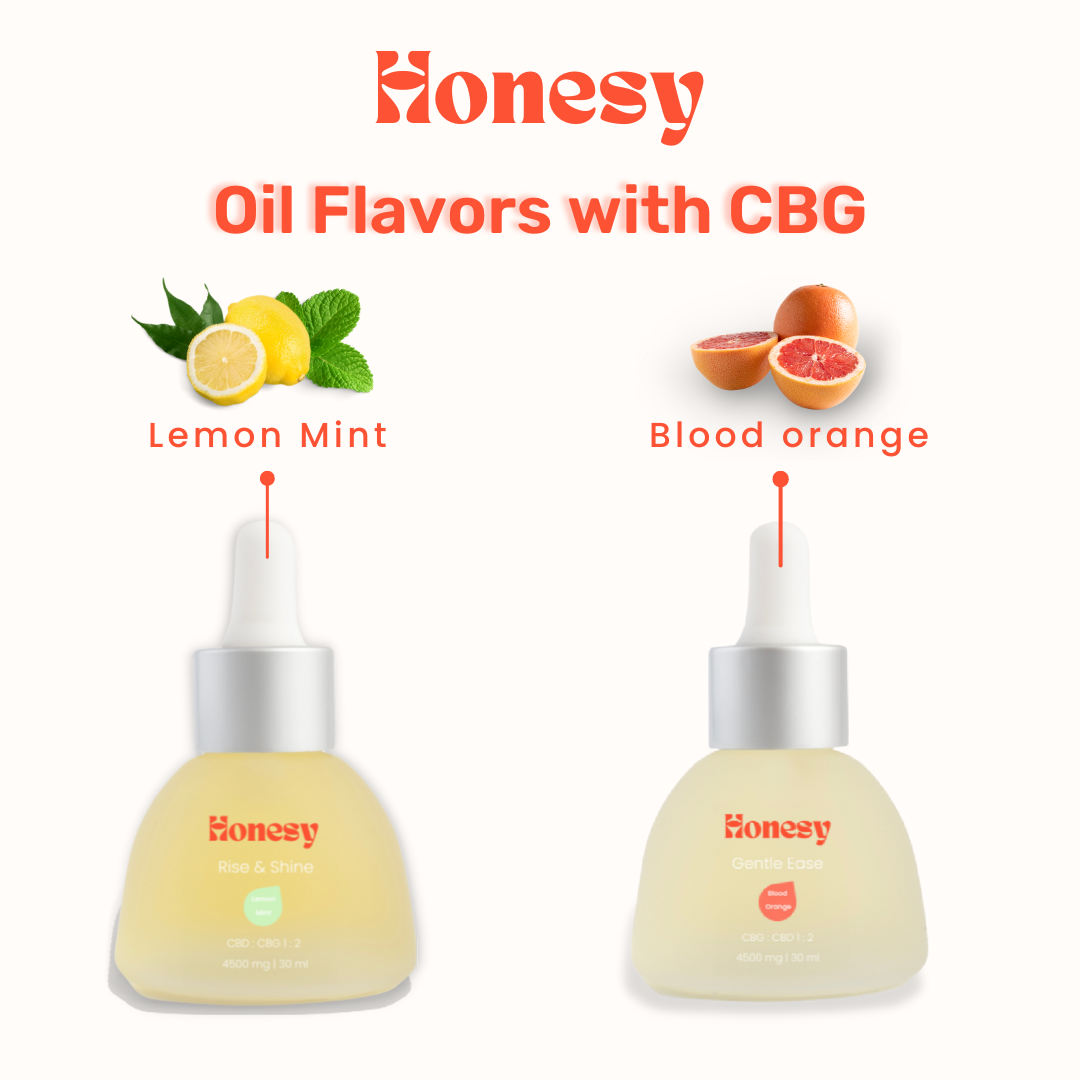
CBG 101: A Beginner's Guide to Cannabigerol and Its Benefits
Introduction to CBG (Cannabigerol)
Hey there, cannabis enthusiasts! Let’s dive into the exciting world of CBG, short for cannabigerol. Think of CBG as the “mother” of cannabinoids. It’s the building block from which other cannabinoids like CBD and THC are made. As interest in natural wellness solutions grows, CBG is stepping into the spotlight, bringing its unique benefits along for the ride!
So, what makes CBG special? Unlike its famous cousins, CBG is non-psychoactive. This means you can enjoy its potential benefits without any of the "high" typically associated with cannabis. Intrigued? Let’s explore more!
What is CBG?
Imagine CBG as the young, ambitious sibling in the cannabis family. It’s synthesized in the early stages of the plant's growth and then gets transformed into CBD and THC as the plant matures. Unfortunately, this transformation means that mature cannabis plants have very little CBG left—making it a bit of a rare gem! To understand more about the role of CBG as a precursor to other cannabinoids, check out this study on the biosynthesis of cannabinoids.
The Unique Extraction Process
Getting your hands on CBG oil isn’t as easy as picking up CBD or THC. It involves specialized extraction techniques, often using younger plants to capture the precious CBG before it morphs into its more famous siblings. So, while CBG might be a bit rarer, it’s definitely worth seeking out for its unique benefits! You can find premium CBG oil options here on Honesy.eu.
How Does CBG Work?
Now that you know what CBG is, let’s talk about how it works in your body. CBG interacts with the endocannabinoid system (ECS)—a fancy term for the network of receptors and neurotransmitters that helps regulate everything from mood to pain. You can learn more about the endocannabinoid system in this research review.
The Dynamic Duo: CB1 and CB2 Receptors
CBG binds to two main types of receptors in the ECS:
- CB1 receptors are mainly found in the brain and central nervous system. These receptors play a key role in regulating mood and memory.
- CB2 receptors are spread throughout the immune system and peripheral tissues, influencing inflammation and immune response.
By interacting with these receptors, CBG helps your body maintain balance—promoting overall wellness. Learn more about CBG’s interaction with the ECS here in this study on cannabinoid receptors.
CBG vs. CBD: What’s the Difference?
Let’s put CBG and CBD head-to-head! Here’s a quick comparison to see how they stack up against each other:
Discover our CBG and CBD products here.
Medical Potential and Research Status
While CBG is still being explored in the research lab, it shows promise in various therapeutic areas, particularly for its neuroprotective benefits and ability to relieve inflammation. Some research suggests that CBG may help protect neurons in cases of neurodegenerative diseases. A study on CBG's anti-inflammatory properties can be found here.
Benefits and Potential Uses of CBG
Ready for the fun part? Here’s a look at some of the awesome benefits of CBG that have researchers buzzing:
- Neuroprotective Effects: CBG may help protect nerve cells, making it a potential ally in fighting neurodegenerative diseases like Huntington’s, as discussed in this study on CBG and Huntington’s disease.
- Anti-Inflammatory Properties: CBG can help reduce inflammation, which is great news for those suffering from conditions like arthritis. This research article discusses how CBG may play a role in inflammatory conditions.
- Appetite Stimulation: If you’re struggling with a lack of appetite—maybe due to treatments like chemotherapy—CBG might help you regain your hunger, as explored in this study.
- Anxiety Relief: Early studies suggest that CBG may alleviate anxiety, making it an appealing option for those looking for natural ways to manage stress. See more about CBG and its potential for reducing anxiety in this research.
Explore CBG products for anxiety and pain relief here.
Is CBG Oil Legal?
Let’s talk legality! The status of CBG can vary depending on where you live. In the United States, CBG derived from hemp (which contains less than 0.3% THC) is generally legal under the 2018 Farm Bill. However, different states may have their own regulations, so always double-check your local laws before purchasing CBG products. For more detailed information on cannabis and cannabinoid regulation in the U.S., visit the U.S. Food and Drug Administration (FDA) page.
In the European Union (EU), CBG products are generally considered legal as long as they are derived from industrial hemp containing less than 0.2% THC (the legal THC limit in the EU). However, the regulations around cannabinoids can vary by country within the EU. Some countries, like Germany and Austria, are more progressive in allowing CBG and other hemp-derived products, while others may have stricter rules.
It’s essential to stay informed about local legislation in your country or region. As of now, CBD and CBG are often treated similarly in EU countries, but laws regarding THC content and the labeling of cannabinoid products must be strictly followed. For more details on hemp legality in the EU, you can check the European Industrial Hemp Association's (EIHA) guidelines here.
Check out legal CBG products on Honesy.eu.
Is CBG Oil Better Than CBD Oil?
So, is CBG oil “better” than CBD oil? Well, it depends on what you’re looking for! Some people find that CBG complements CBD perfectly, especially if they haven’t had much luck with CBD alone.
The Power of Synergy
When you combine CBG and CBD, you tap into the entourage effect—where cannabinoids work better together than separately. This means that using both may amplify their benefits, providing a more comprehensive approach to wellness. For a complete entourage effect, check out our full-spectrum products here.
Does CBG Have Any Side Effects?
Great news! CBG is generally safe and well-tolerated. However, like any supplement, it can come with some mild side effects:
- Digestive Issues: Some users may experience a bit of stomach discomfort or changes in appetite.
- Headaches: A few individuals report headaches, especially when starting.
Remember, CBG is non-psychoactive, so you won’t have to worry about any mind-altering effects—making it a safe option for most!
How to Use CBG Oil and Dosage Tips
Now, if you’re ready to try CBG oil, here’s how to get started:
- Begin Low: Start with a low dose, like 5-10 mg of CBG oil. This lets you see how your body reacts without overwhelming it.
- Adjust Gradually: After a few days, check in with yourself. If you feel good, you can gradually increase your dosage by 5 mg at a time.
Explore our CBG oils here for dosage information.
Self-Monitoring
Keep track of your experiences! Write down how you feel, any changes in symptoms, and how your body responds. This will help you find your sweet spot and optimize your CBG experience.
Conclusion
CBG (cannabigerol) is an exciting cannabinoid that’s gaining traction for its potential health benefits. From its neuroprotective effects to its ability to stimulate appetite and relieve anxiety, CBG is a powerhouse in its own right.
As you explore the world of cannabinoids, remember to consult with a healthcare professional before starting any new supplement, especially if you’re on other medications. Whether you choose to try CBG oil alone or combine it with CBD, you’re taking a step toward discovering the benefits of natural wellness solutions.
Get ready to embrace the potential of CBG and see how it can support your health journey!








